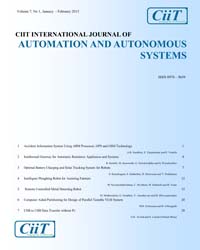Automated Irrigation System with Pesticide Control Using a Wireless Sensor Network and GSM Module
Subscribe/Renew Journal
An automated irrigation system is used to optimize water use for agricultural crops. The system has a distributed wireless network of soil-moisture and temperature sensors placed in the ischolar_main zone of the plants. In addition, a gateway unit handles sensor information, triggers actuators, and transmits data to mobile phone through GSM. The pesticide monitor unit uses a load cell sensor to measure quantity of the pesticide for the crop. An algorithm was developed with threshold values of temperature, soil moisture and load cell values which is programmed into a microcontroller-based gateway to control water quantity and pesticide. Analysis has been done to understand the crop production on a particular land and the requirement of water and pesticide for a particular crop is studied and the values are programmed into a microcontroller. Because of its energy autonomy and low cost, the system has the potential to be useful in water limited geographically isolated areas.
Keywords
Automation, Pesticide, GSM, Irrigation, Measurement, Water Resources, Wireless Sensor Networks (WSNs).
User
Subscription
Login to verify subscription
Font Size
Information

Abstract Views: 339

PDF Views: 4



